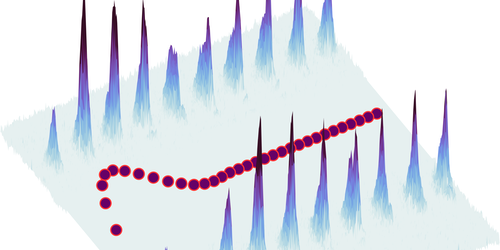A Bose-Einstein-Condensate Boomerang
Real-world materials contain elements of disorder, such as atomic impurities or imperfect alignments in the interfaces of their crystals. These imperfections cause electrons in the material to become confined to a particular location—an effect known as Anderson localization—which can give rise to unexpected macroscopic behaviors, such as turning a metal into an insulator. It can also cause the so-called quantum-boomerang effect, in which a localized particle launched in any direction returns to its original location. Now, Roshan Sajjad of the University of California, Santa Barbara, and colleagues report the first experimental observation—in the momentum space of a Bose-Einstein condensate (BEC)—of this effect [1].
The team’s BEC was comprised of 100,000 lithium atoms confined in an optical lattice. The team imparted momentum to the BEC by switching off the laser used to make the initial trapping lattice and repeatedly pulsing another laser to create an identical but phase-shifted lattice. Monitoring the average momentum of the BEC, they observed it to accelerate in one direction, slow, and then reverse direction, returning to its initial momentum, as expected for a quantum boomerang.
The team also looked for conditions that would prevent a boomerang of the BEC’s momentum. For example, they found that introducing a time delay to the kick could, under most conditions, suppress the effect. The results matched their expectation that the BEC should only experience a momentum boomerang when initialized in a state that has time-reversal symmetry. In the future, the team says that they plan to study the quantum-boomerang effect in more complex systems whose constituent particles interact.
–Sophia Chen
Sophia Chen is a freelance science writer based in Columbus, Ohio.
References
- R. Sajjad et al., “Observation of the quantum boomerang effect,” Phys. Rev. X 12, 011035 (2022).




